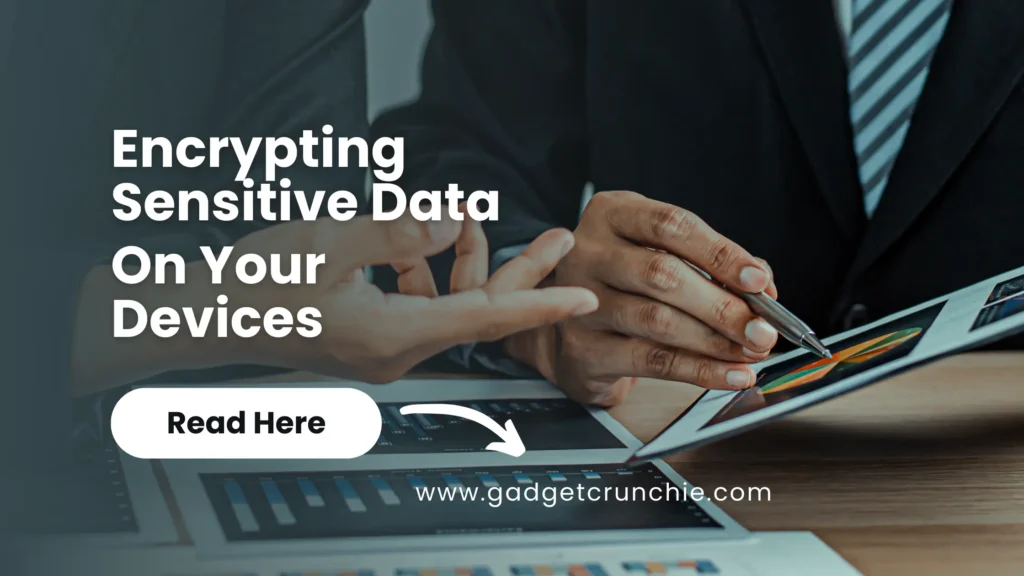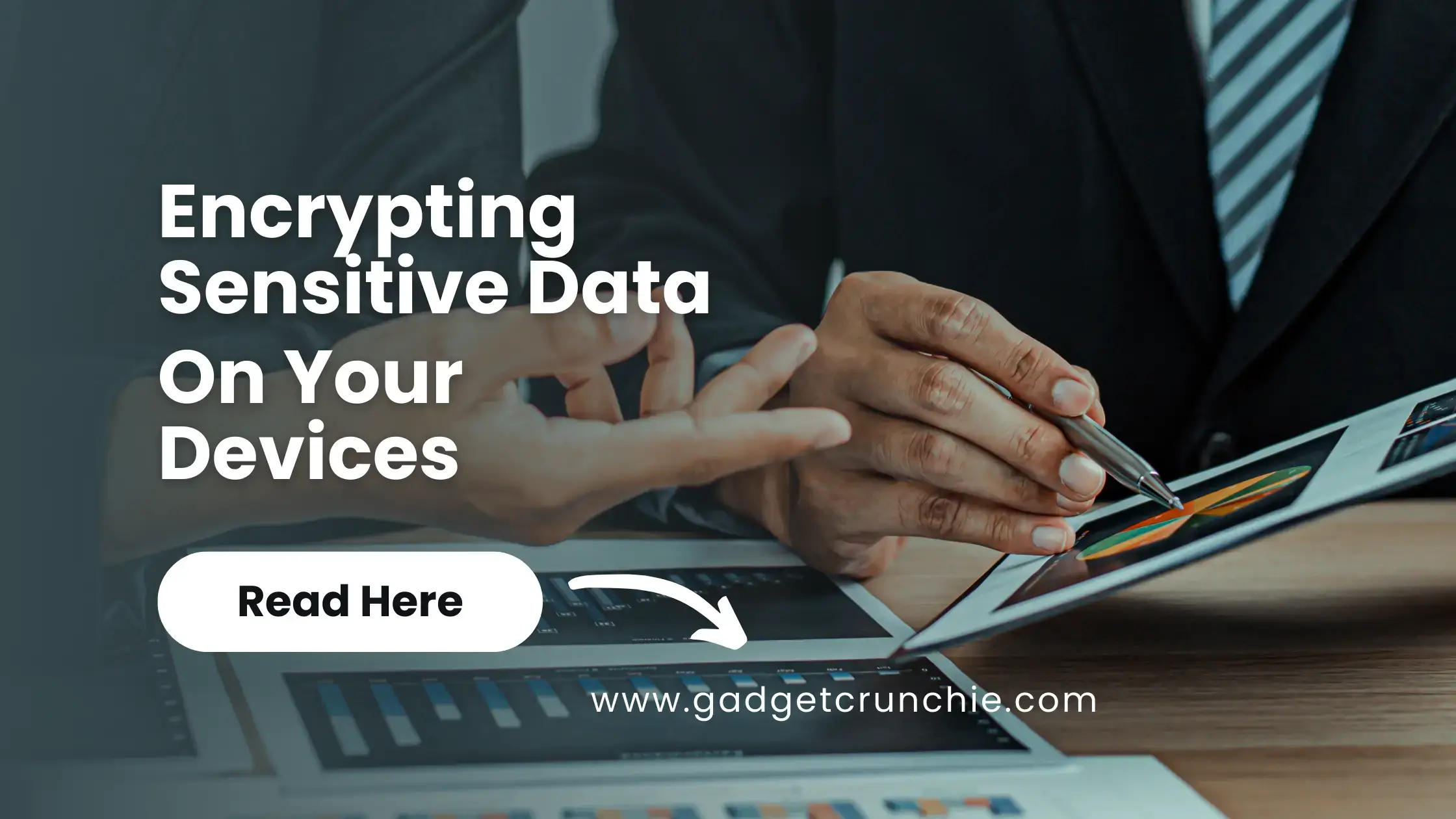Encrypting Sensitive Data on Your Devices
Encrypting sensitive data serves as a crucial pillar in safeguarding sensitive information against unauthorized access and potential threats. In an increasingly digital world where data breaches and cybercrimes are prevalent, understanding the fundamentals of encrypting sensitive data on devices has become paramount. This article delves into the significance of data encryption, explores various encryption methods and best practices, highlights the risks associated with not encrypting sensitive data, discusses encryption tools and technologies, provides insights on implementing encryption across devices, and looks ahead to future trends shaping the field of data encryption.

Introduction to Encrypting Sensitive Data
Data encryption is like putting your sensitive information in a high-security vault where only you hold the key. It scrambles your data into a code that only authorized parties can decode and access.
Defining Data Encryption
Data encryption is the process of converting plain text into a secret code, making it unreadable to unauthorized users. It ensures that even if your device falls into the wrong hands, your data remains secure.
History and Evolution of Encryption
Encryption dates back to ancient times when Caesar used a simple cipher to conceal his messages. Fast forward to modern times, advanced encryption algorithms like AES and RSA are used to safeguard data in digital communication.
Importance of Encrypting Sensitive Data
Encrypting sensitive data is like putting a lock on your diary. It’s crucial for safeguarding your privacy and ensuring compliance with data protection laws.
Protecting Data Privacy
Data encryption is your shield against prying eyes. It prevents unauthorized access to your personal information, financial details, and any other sensitive data stored on your devices.
Compliance with Data Protection Regulations
By encrypting sensitive data, you not only protect yourself but also adhere to data protection regulations like GDPR and HIPAA. Compliance shows that you take data security seriously and reduces the risk of legal consequences.
“How AI is Transforming Small Businesses 2024: Opportunities and Challenges complete read to know about it.” Link
Zubair Abid
Methods of Encrypting Data on Devices
When it comes to encrypting data, you have options ranging from simple lock-and-key methods to complex cryptographic protocols. Understanding the different approaches can help you choose the right level of security for your needs.
Symmetric vs. Asymmetric Encryption
Symmetric encryption uses a single key to both encrypt and decrypt data, like sharing a secret code with a trusted friend. Asymmetric encryption, on the other hand, involves a pair of keys – one for encryption and one for decryption – providing a higher level of security for sensitive data.
Encryption Algorithms and Protocols
Encryption algorithms are the math behind the magic of data protection. Popular algorithms like AES (Advanced Encryption Standard) and protocols like SSL/TLS ensure that your data remains secure during transmission and storage.
“Don’t miss out! Check out my latest YouTube video for in-depth insights and exciting content. Click here Gadget Crunchie to watch now!”
Gadget Crunchie
Best Practices for Data Encryption
Encrypting data is just the first step; following best practices ensures that your sensitive information stays locked away from prying eyes.
Strong Password Management
Your encryption is only as strong as your password. Make sure to use complex, unique passwords for your encryption keys and regularly update them to enhance security.
Data Backup and Recovery Strategies
Even with encryption, data loss can happen. Implementing regular data backups and recovery strategies ensures that you can still access your information even in the event of a device failure or security breach.
Risks of Not Encrypting Sensitive Data
Data Breaches and Identity Theft
Picture this: you wake up one morning, only to find out that your sensitive data has been stolen. Your personal information is out there, floating around in the digital world, ripe for exploitation. That’s the nightmare scenario of not encrypting your data. Data breaches can expose your personal details, making you an easy target for identity theft. Encrypting your data adds a layer of protection that can safeguard you from such digital nightmares.
Legal and Reputational Consequences
Imagine the horror of your company’s confidential data being leaked because it wasn’t adequately encrypted. Not only could this result in legal repercussions due to privacy regulations, but it could also tarnish your organization’s reputation. Encrypting sensitive data isn’t just about securing information; it’s also about protecting your integrity and trustworthiness in the eyes of your clients and customers.
Encryption Tools and Technologies
Popular Encryption Software
From the trusty BitLocker to the versatile VeraCrypt, there’s a plethora of encryption software available to help you lock down your sensitive data. These tools offer user-friendly interfaces and robust encryption algorithms to keep your information safe from prying eyes. Whether you’re a privacy-conscious individual or a security-savvy organization, encryption software is a must-have in today’s digital age.
Hardware-based Encryption Solutions
For those who prefer a more tangible approach to data security, hardware-based encryption solutions provide a physical barrier against unauthorized access. Devices like encrypted USB drives and hardware security modules offer an added layer of protection by encrypting data at the hardware level. With these tools, you can fortify your data defenses and keep your information safe from potential breaches.
Implementing Encryption Across Devices
Securing Mobile Devices
In a world where we carry our lives in our pockets, securing mobile devices is crucial in safeguarding our sensitive data. Whether it’s enabling device encryption on your smartphone or using secure messaging apps, taking proactive steps to encrypt your mobile devices can prevent unauthorized access to your personal information. Remember, a little encryption goes a long way in keeping your mobile data safe and sound.
Encrypting Cloud Storage and Communication
With the rise of cloud storage and communication platforms, encrypting your data in the cloud has become more important than ever. Services like Dropbox and Signal offer end-to-end encryption, ensuring that your files and messages remain confidential during transit and storage. By encrypting your cloud storage and communication channels, you can rest easy knowing that your sensitive information is shielded from cyber threats.
Future Trends in Data Encryption
Quantum Encryption Technologies
As the digital landscape evolves, so too must our encryption technologies. Quantum encryption, with its promise of ultra-secure communication channels, is poised to revolutionize data protection. By harnessing the power of quantum mechanics, these advanced encryption methods can thwart even the most sophisticated cyber attacks, ensuring unparalleled security for sensitive information.
Blockchain and Decentralized Encryption
Enter blockchain, the decentralized ledger technology that’s changing the game in data security. By storing encrypted data across a network of computers, blockchain offers a tamper-proof and transparent way to secure information. With blockchain-based encryption, data integrity is preserved, and trust is maintained without the need for centralized authorities. As we embrace the decentralized future, blockchain encryption is set to become a cornerstone of data protection in the digital age.
Conclusion
In conclusion, encrypting sensitive data on devices is not just a cybersecurity best practice but a necessary step in protecting personal and confidential information. By following the recommended encryption methods, best practices, and staying informed about emerging technologies, individuals and organizations can fortify their data security defenses and mitigate the risks of data breaches. Embracing encryption as a proactive measure can pave the way for a more secure digital future where privacy and data integrity are upheld.



